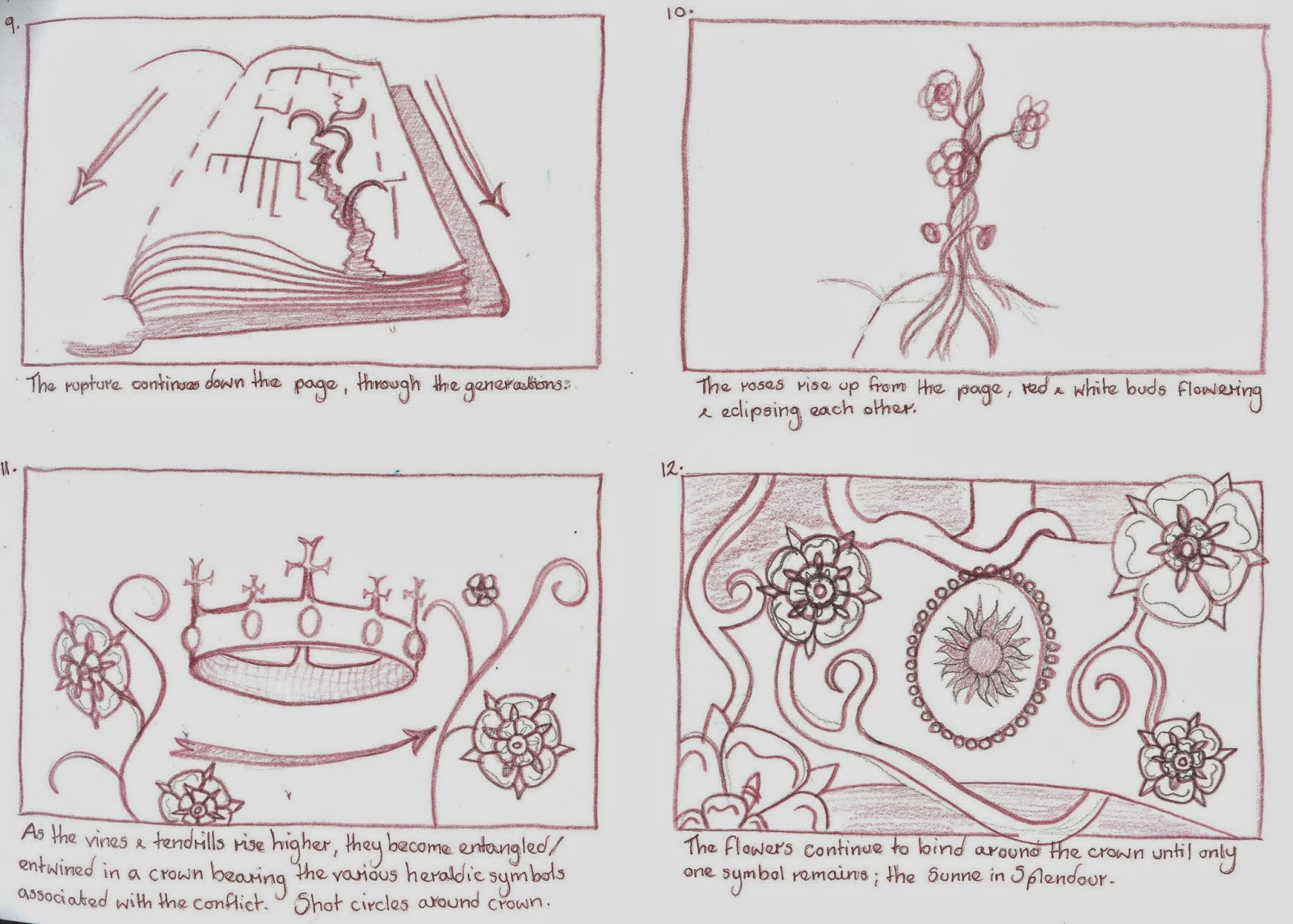One of my main concerns with this project is how I can slim down the number of frames I need to create from a daunting 960 to a more manageable number. There are a number of ways this could be done, such as by working on 'doubles' for some sections, but I have also decided that I will create my backgrounds and animated objects separately. This is so that there is no need to redraw complex backdrops multiple times, although there is a risk that my animated objects will not look as much a part of the environment as if I had drawn them as one.
I wanted (for the final shot of the roses encircling the crown) to use a detailed medieval tapestry as a backdrop, to connote the period, but was unable to find a suitable fabric to use as reference. Although it is anachronistic, I instead chose a William Morris print as a backdrop, as the deep colours do not detract attention from my central roses, while the flowers in the pattern subtly mirror the shape of the Yorkshire roses.
I had also initially planned to depict the opening book sitting upon a swathe of red fabric, yet when I overlaid the animated sequence with a preliminary photograph of he fabric, the two did not appear part of the same image, with the book looking as though it was floating above the fabric. It needed a more level surface.
 |
| A photographic mock up of how I initially envisioned my opening shot. |
Another way to improve my efficiency was to use After Effects for certain shot movements (such as panning and zooming without a change in angle) as well as to reuse the blooming rose multiple times, so that I was not redrawing similar movements unnecessarily. I was concerned at first that only showing the roses from the front would make them appear flat, but it is from this angle that they are most recognisable as the symbolic flowers of the Wars of the Roses, while the earlier stages of the opening flowers have greater depth and dimension.
Finally, a point that had been made during my interim crit was that my vision of having the writing of the family tree appear as though it were being written would be fairy time consuming and that there might be a better way to achieve this than drawing it frame by frame. Taking this on board, I wrote out each shot of the family tree only once, and used Photoshop to erase the writing a little at a time, before assembling these images into a sequence.














